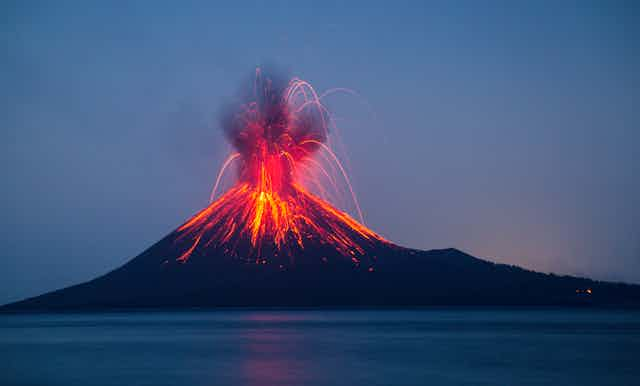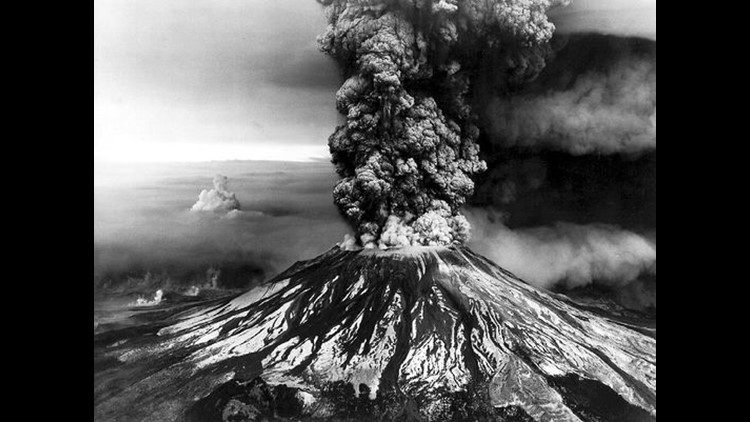Understanding Volcanoes: A Brief Overview
Before we dive into the specific countries, let’s start with a brief overview of what exactly makes a volcano active. Volcanoes are essentially openings in the Earth’s crust through which hot molten magma, rocks, and gases escape from deep within the Earth. When this molten material reaches the surface, it is called lava. What differentiates an active volcano from an extinct one is its level of volcanic activity.
An active volcano is one that has erupted within recent history and is still capable of erupting in the future. The timeframe for classifying a volcano as active varies, but it is generally considered to be within the last 10,000 years. Active volcanoes exhibit signs of unrest, such as the release of gases, frequent minor eruptions, or even occasional major eruptions that can have devastating consequences.
The Role of Tectonic Plates in Volcanic Activity
Volcanic activity is intricately linked with the motion of tectonic plates, the large rigid pieces that make up the Earth’s surface. Most active volcanoes are found along the boundaries of tectonic plates, where intense geologic activity occurs. The movement of these plates leads to the creation of subduction zones, where one plate is forced beneath another. It is in these subduction zones that some of the most explosive and dangerous volcanoes are found, such as the infamous Ring of Fire in the Pacific Ocean.
The Top Countries with the Most Active Volcanoes
Now that we have a better understanding of volcanoes, let’s explore the countries that are home to the highest number of active volcanoes. These countries offer a glimpse into the raw power of these geological giants and provide an opportunity for both scientific study and adventurous exploration.
Indonesia: The Archipelago of Fire
When it comes to active volcanoes, no country can rival Indonesia. This vast archipelago is scattered with over 130 active volcanoes, making it a true paradise for volcanic enthusiasts. From the iconic Mount Bromo to the awe-inspiring Krakatoa, Indonesia offers a diverse range of volcanic landscapes to explore. For an unforgettable experience, hike up Mount Rinjani on Lombok Island, or witness the mesmerizing blue flames of the Ijen Crater in East Java.

Image Credit: Deni_Sugandi/shutterstock
Japan: A Land Shaped by Volcanoes
Japan, known as the Land of the Rising Sun, is also a land shaped by volcanoes. Sitting on the Pacific Ring of Fire, Japan boasts more than 100 active volcanoes. Mount Fuji, the country’s tallest and most iconic volcano, attracts thoUnited Statesnds of climbers each year. The hot springs of Hakone and the volcanic island of Kyushu are other notable volcanic destinations in Japan.
The United States: Home to the World’s Most Dangerous Volcano
While the United States may not have the highest number of active volcanoes, it is home to one of the world’s most dangerous volcanoes – Mount St. Helens. Located in Washington State, Mount St. Helens gained worldwide notoriety for its catastrophic eruption in 1980. Today, it serves as a living laboratory for scientists studying volcanic activity. Other volcanic hotspots in the U.S. include the Hawaiian Islands, home to the continuously erupting Kilauea volcano, and Alaska, which has a high concentration of active volcanoes.

Image Credit: United States Geological Survey via Earth Science World Image Bank
Volcano Surveillance Techniques
Seismology, the study of earthquakes, plays a vital role in monitoring volcanic activity. Monitoring networks comprised of seismometers are strategically placed around active volcanoes to detect even the slightest ground vibrations. Gas monitoring involves analyzing the quantity and composition of gases emitted by a volcano, as certain changes can indicate an impending eruption. Satellite imagery aids in detecting changes in the volcano’s shape or thermal activity, offering valuable insights into its behavior.
Predicting Eruptions: An Inexact Science
While scientists have made significant advancements in monitoring volcanic activity, predicting eruptions with complete accuracy remains an inexact science. Volcanoes are dynamic and complex systems, and their behavior can be influenced by numerous factors. Despite the challenges, the tireless efforts of scientists and advancements in technology continue to improve our understanding of these natural wonders.
The Benefits and Drawbacks of Living Near a Volcano
For communities living near active volcanoes, there are both benefits and drawbacks. The volcanic ash and minerals released during eruptions enrich the soil, resulting in fertile farmland and abundant harvests. Additionally, hot springs and geothermal energy, harnessed from volcanic activity, can provide sustainable sources of heat and electricity. However, the risks associated with living near an active volcano cannot be ignored. Lava flows, pyroclastic flows, and volcanic gases can cause widespread destruction and endanger human lives.
Volcanoes and Climate: A Complex Relationship
Volcanoes can also have a significant impact on the Earth’s climate. During large eruptions, massive amounts of volcanic gases and aerosols are ejected into the atmosphere. These particles can reflect sunlight back into space, leading to a temporary cooling effect on the planet. However, the long-term impact of volcanic eruptions on the climate is still a topic of ongoing research.
Safety Measures for Volcano Tourists
Exploring active volcanoes requires caution and adherence to safety measures. It is essential to follow the guidance of trained guides and authorities, ensuring you stay within designated safe zones. Wearing protective gear, such as helmets and gas masks, can help mitigate potential risks. Remember, while the beauty of volcanoes is undoubtedly captivating, safety should always be the top priority.
The Most Visited Volcanoes in the World
Some volcanoes have gained worldwide renown and attract countless visitors each year. Mount Vesuvius in Italy, famous for its destructive eruption in 79 AD that buried the city of Pompeii, remains a popular tourist destination. Another top choice is Mount Etna, also in Italy, which offers a glimpse into ongoing volcanic activity. Volcanoes such as Mount Arenal in Costa Rica, Mount Bromo in Indonesia, and Mount Batur in Bali also rank high on the list of must-visit volcanic destinations.
As our journey exploring countries with the highest number of active volcanoes comes to an end, we hope you have gained a deeper appreciation for these incredible natural wonders. Remember, volcanoes are not just mountains of fire and fury; they shape our planet’s landscapes, influence our climate, and offer a window into the dynamic forces that shape our Earth.
While most of us prefer the comfort and safety of a tropical beach, those who are more daring should definitely add visiting a volcano to their bucket list!



